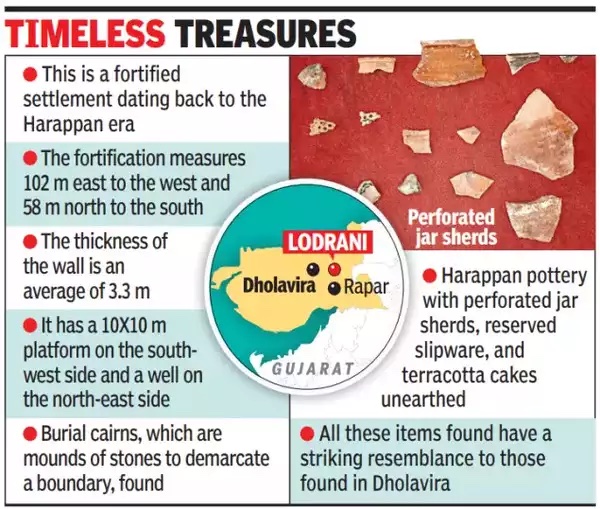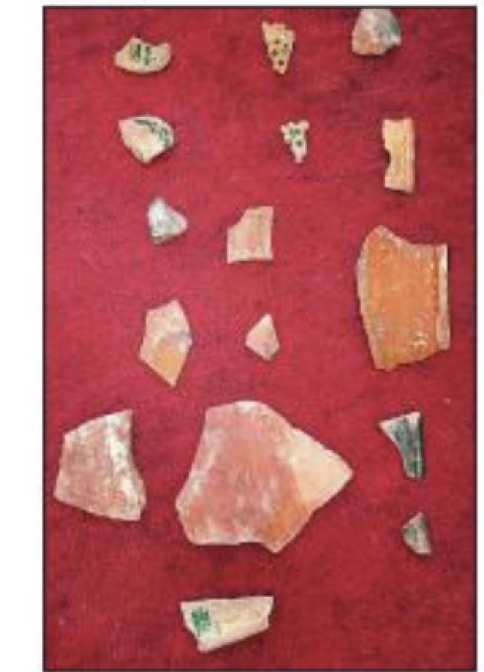Morodharo/ Lodrani
This is a collection of articles archived for the excellence of their content. |
Harappan site: The 2024 excavations
Nimesh Khakhariya, February 20, 2024: The Times of India

From: Nimesh Khakhariya, February 20, 2024: The Times of India

From: Nimesh Khakhariya, February 20, 2024: The Times of India
Kutch villagers’ treasure hunt helps unearth Harappan site near Dholavira
Rajkot : They dug for gold – found a civilisation instead.
Legend has it that Lodrani, a hamlet 51km from the World Heritage Site of Dholavira in Kutch, was sitting on buried gold. So, some enterprising residents got together around five years back and started a dig, dreaming of getting rich. What they found, and what archaeologists, who took over the dig after preliminary finds, discovered is a Harappan-era fortified settlement. Ajay Yadav, a research scholar working with his professor, Damian Robinson, both from Oxford’s School of Ar chaeology, were lead archaeologists in this discovery. They said architectural details at the new site bear striking resemblance to Dholavira.
Talking to TOI, Yadav said the site had earlier been pretty much dismissed as a large stone-rubble settle ment. “Villagers believed there was a medieval fortress and buried treasure. But when we examined the site, we found a Harappan settlement where life was flourishing some 4,500 years ago.”
After being almost-famous, Lodrani’s wait finally ends
The site, formally identified in Jan, has been named Morodharo (a Gujarati word for less salty and potable water). It yielded a large quantity of Harappan pottery, similar to those found in Dholavira, per Yadav. The settlement looks mature (2,600-1,900 BCE) to late (1,900-1,300 BCE) Harappan. Detailed examination and excavation will reveal more, archaeologists said.
“Our most important observation is that this site and Dholavira both depended on the sea. As it’s so close to the Rann (desert), it can be safely presumed that at that time what became a desert later must have been navigable,” Yadav said.
Lodrani’s claim to archaeological fame has come after false starts earlier. A survey was conducted in 1967-68 by archaeologist J P Joshi. He reported a Harappan site at Lodrani but no concrete evidence was then found. During the Dholavira excavation between 1989 and 2005, experts visited Lodrani but they weren’t impressed.
Had residents of a small hamlet not begun a treasure hunt, a vital piece of India’s antiquity would have remained buried.